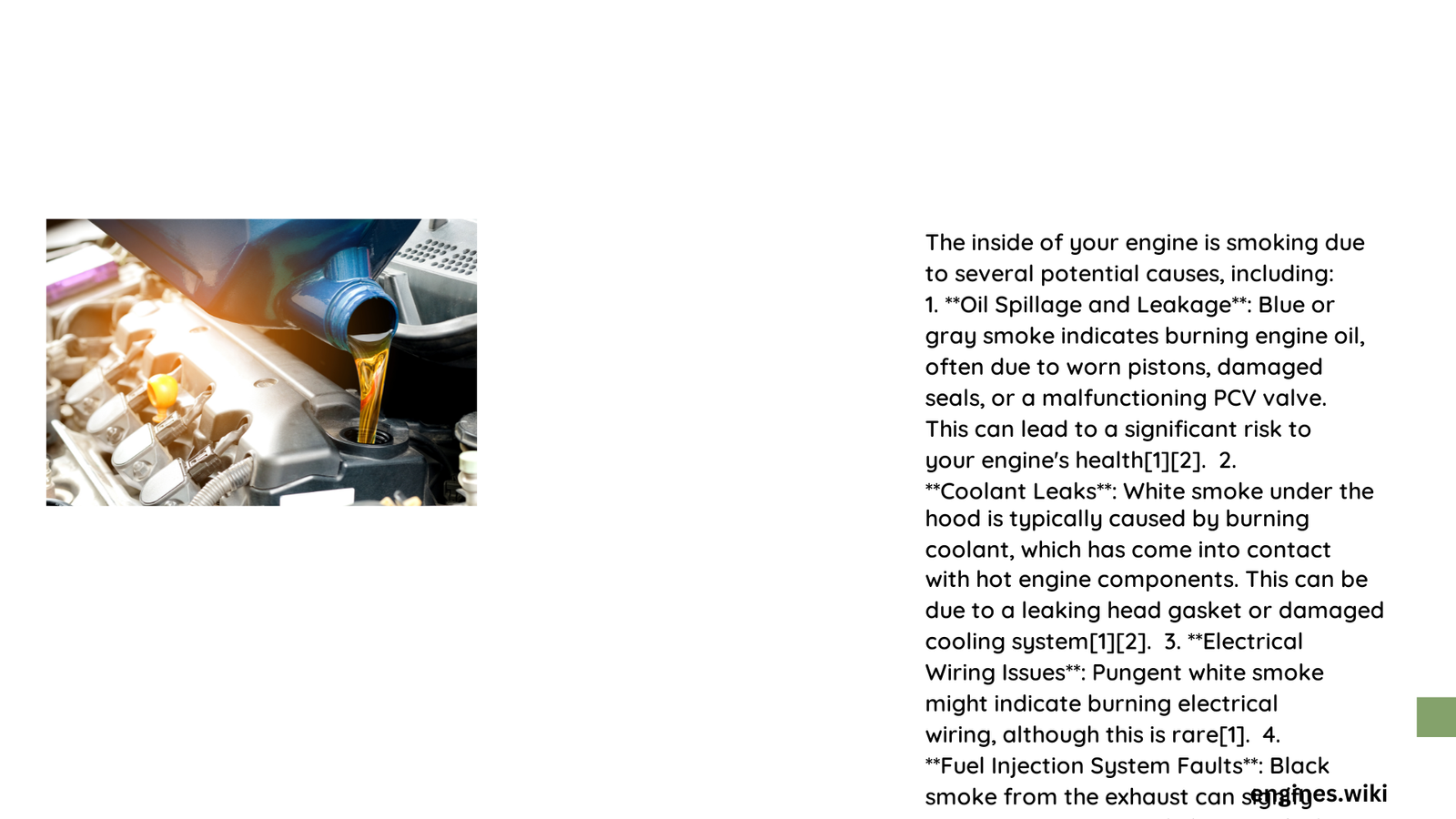Engine smoking is a critical warning sign that indicates potential internal mechanical failures. When the inside of your engine starts smoking, it signals complex problems ranging from oil leakage to critical component degradation. This comprehensive guide will help you understand the intricate reasons behind engine smoking, providing expert insights into diagnosing and resolving these potentially catastrophic automotive issues.
What Causes Internal Engine Smoking?
Are Worn Piston Rings Responsible?
Worn piston rings represent a primary culprit in internal engine smoking. These critical components create a seal between the piston and cylinder wall, preventing oil from entering the combustion chamber. When they deteriorate, several consequences emerge:
- Oil Seepage: Compromised rings allow engine oil to leak into combustion areas
- Blue Smoke Production: Burning oil creates distinctive blue-tinted exhaust
- Performance Degradation: Reduced engine efficiency and increased oil consumption
Diagnostic Indicators of Piston Ring Failure
| Symptom | Severity | Recommended Action |
|---|---|---|
| Consistent Blue Smoke | High | Immediate Professional Inspection |
| Increased Oil Consumption | Medium | Compression Test Required |
| Reduced Engine Performance | Low | Comprehensive Engine Evaluation |
Can Damaged Valve Seals Create Smoking?
Valve seals play a crucial role in preventing oil migration. When these seals crack or wear, significant internal smoking can occur:
- Temperature-Induced Breakdown: Extreme heat causes seal material degradation
- Continuous Oil Leakage: Oil enters combustion chambers
- Persistent Smoking: Especially noticeable during engine startup
How Do Head Gasket Failures Contribute?
A compromised head gasket creates multiple pathways for fluid leakage:
- Coolant Intrusion: Can produce white or bluish smoke
- Oil Contamination: Leads to potential internal engine damage
- Pressure System Disruption: Affects overall engine performance
What Role Does the PCV Valve Play?
The Positive Crankcase Ventilation (PCV) valve manages internal engine pressures:
- Pressure Regulation: Prevents excessive crankcase pressure
- Potential Malfunction: Can cause oil burning and smoking
- Diagnostic Complexity: Requires specialized testing equipment
Technical Diagnostic Approaches

How to Identify Smoking Sources?
Effective diagnosis involves multiple strategies:
- Visual exhaust smoke color analysis
- Comprehensive compression testing
- Advanced computerized engine scanning
- Professional mechanical inspection
What Are Quantifiable Smoking Indicators?
Critical measurement parameters include:
- Oil Viscosity: Determines lubrication effectiveness
- Engine Temperature: Indicates potential overheating risks
- Crankcase Pressure: Reveals internal system health
Prevention and Maintenance Strategies
How Can Smoking Be Prevented?
- Regular oil changes
- Consistent engine maintenance
- Timely component replacement
- Professional periodic inspections
Expert Recommendations
Immediate action is crucial when internal engine smoking occurs. Do not ignore persistent smoke signals, as they represent potential catastrophic engine failure risks. Consult professional automotive technicians for comprehensive diagnostics and precise resolution.
Technical Complexity Warning
Internal engine smoking represents an advanced mechanical issue requiring specialized knowledge. Amateur repairs might exacerbate existing problems and lead to substantial financial consequences.
References:
– Automotive Diagnostic Guide
– Engine Maintenance Resources
– Professional Repair Techniques
